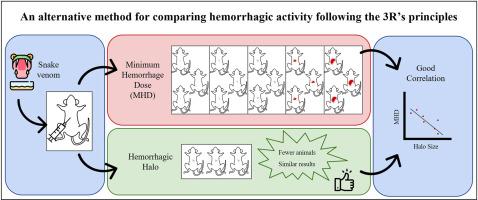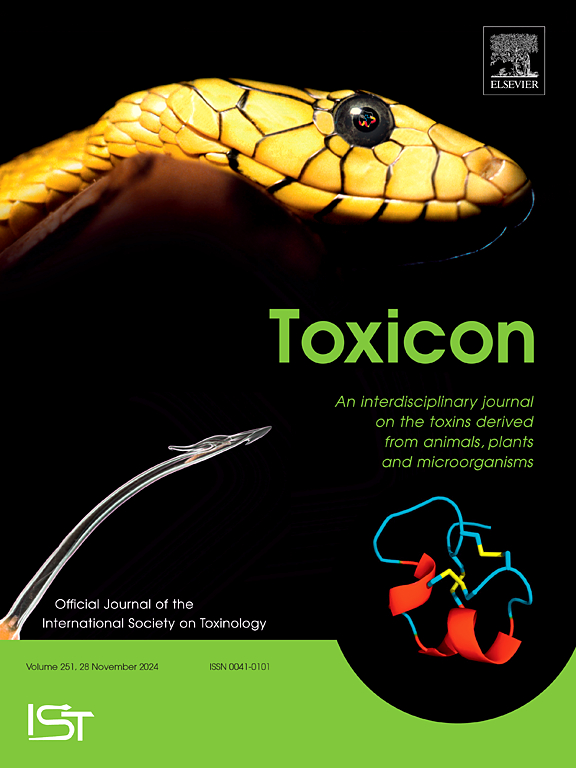按照 3R 原则之一比较蛇毒出血活性的另一种方法
IF 2.6
4区 医学
Q2 PHARMACOLOGY & PHARMACY
引用次数: 0
摘要
毒液引起的出血分析通常是通过最小出血剂量(MHD)来进行的,但类似的方法也可用于比较实验动物数量较少的毒液。我们的研究比较了五种不同毒液的最小出血剂量与出血点的大小,发现结果之间存在良好的相关性。考虑到 3Rs 原则,我们建议使用出血点法来比较蛇毒的出血活性,而不是使用 MHD 法,因为前者所需的动物比后者少 5 倍。本文章由计算机程序翻译,如有差异,请以英文原文为准。

An alternative method for comparing hemorrhagic activity of snake venoms following one of the 3R's principles
Venom-induced hemorrhage analysis usually is performed by Minimum Hemorrhagic Dose (MHD), however a similar method can be used to compare venoms with fewer laboratory animals. Our work compared the MHD of five different venoms, with the size of hemorrhagic spot, finding good correlations in the results. Considering the 3Rs principle, we propose the use of the hemorrhagic spot method to compare hemorrhagic activity of snake venoms, rather than using the MHD method, since the first one needs 5 times less animals than the other.
求助全文
通过发布文献求助,成功后即可免费获取论文全文。
去求助
来源期刊

Toxicon
医学-毒理学
CiteScore
4.80
自引率
10.70%
发文量
358
审稿时长
68 days
期刊介绍:
Toxicon has an open access mirror Toxicon: X, sharing the same aims and scope, editorial team, submission system and rigorous peer review. An introductory offer Toxicon: X - full waiver of the Open Access fee.
Toxicon''s "aims and scope" are to publish:
-articles containing the results of original research on problems related to toxins derived from animals, plants and microorganisms
-papers on novel findings related to the chemical, pharmacological, toxicological, and immunological properties of natural toxins
-molecular biological studies of toxins and other genes from poisonous and venomous organisms that advance understanding of the role or function of toxins
-clinical observations on poisoning and envenoming where a new therapeutic principle has been proposed or a decidedly superior clinical result has been obtained.
-material on the use of toxins as tools in studying biological processes and material on subjects related to venom and antivenom problems.
-articles on the translational application of toxins, for example as drugs and insecticides
-epidemiological studies on envenoming or poisoning, so long as they highlight a previously unrecognised medical problem or provide insight into the prevention or medical treatment of envenoming or poisoning. Retrospective surveys of hospital records, especially those lacking species identification, will not be considered for publication. Properly designed prospective community-based surveys are strongly encouraged.
-articles describing well-known activities of venoms, such as antibacterial, anticancer, and analgesic activities of arachnid venoms, without any attempt to define the mechanism of action or purify the active component, will not be considered for publication in Toxicon.
-review articles on problems related to toxinology.
To encourage the exchange of ideas, sections of the journal may be devoted to Short Communications, Letters to the Editor and activities of the affiliated societies.
 求助内容:
求助内容: 应助结果提醒方式:
应助结果提醒方式:


